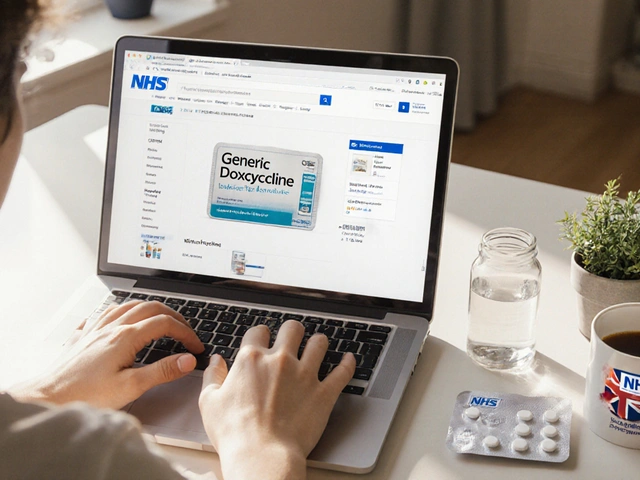Picture a clear, oily liquid that sits quietly but can blow up mountains or save someone’s life in a split second. That’s nitroglycerin. Sounds straight out of a movie, right? But nitroglycerin has been quietly shaping history and medicine for well over 150 years. It’s not just the thing that makes old-school action movies sparkle (or erupt, literally); it’s also tucked into the jackets of people living with heart disease, ready to be used when pain hits. How on earth did an explosive turn into heart medicine? And how safe is it to actually carry around?
From Dynamite to Doctor’s Office: The Wild Journey of Nitroglycerin
Nitroglycerin wasn’t always on the side of good. In the mid-1800s, an Italian chemist named Ascanio Sobrero first whipped it up. He realized he’d created something incredibly risky—the liquid would explode with the faintest nudge or bit of heat. Alfred Nobel saw the dangerous magic of nitroglycerin and used it to invent dynamite. That invention powered railway building, mining, and pretty much blasted the world into the modern era. But there was more: Nobel, haunted by the mayhem, poured a chunk of his fortune into funding the Nobel Prizes. Strange to think blasting powder helped buy peace prizes.
But nitroglycerin didn’t stay boxed up in the world of explosives. Doctors stumbled onto a surprising effect: workers exposed to small amounts in nitroglycerin factories would sometimes complain about pounding headaches but also noticed their angina—a type of chest pain—improved on the job. The connection got researchers curious. Before too long, tiny doses of nitroglycerin were tested as medicine, and by the late 1800s it was helping people with heart problems. That dual life—risky explosive and heart saver—continues to this day. Imagine carrying something in your pocket that’s movies-style dangerous but also part of your medical routine.
Nitroglycerin in Medicine: How It Works and Why It Matters
The heart’s a pump, but sometimes it runs into trouble. Angina is that tight, crushing feeling in the chest—a signal that blood isn’t reaching the heart muscle fast enough due to narrowed vessels. That’s where nitroglycerin shines. When taken as medicine, it doesn’t explode but instead relaxes and widens blood vessels. This lets blood flow more easily and feeds oxygen to the tired heart muscle—relief in a matter of minutes.
You’ll find nitroglycerin in all sorts of forms: sublingual (under the tongue) tablets, sprays, patches, even ointments. Those tablets people slip under their tongues during a heart attack—that’s the stuff. The reason it’s absorbed under the tongue is because it hits the bloodstream fast, bypassing the digestive system.
It’s not a cure, but it can save precious time while emergency help is on the way or ease regular angina attacks. In fact, it remains one of the oldest drugs still in daily use for heart patients. That’s rare for any medication.
If you or someone you know has been prescribed nitroglycerin, here’s what’s crucial: it works fast—30 seconds to just a couple of minutes. Relief is usually felt quickly, but that effect doesn’t last more than a couple of hours. Because it lowers blood pressure, you’ll want to sit down before taking it; standing up too quickly with widened blood vessels can make you dizzy or even faint. And here’s something not everyone knows: repeated use in a short time can dull the effect. Doctors call this “nitrate tolerance.” To avoid this, there are usually gaps between doses in a 24-hour period.

The Explosive Side: Industrial Uses, Risks, and History
It’s easy to focus on nitroglycerin’s role in medicine, but that hardly scratches the surface. In industry, nitroglycerin’s power is legendary. Even now, it forms the backbone of many explosives, especially for mining and construction. But its risks are not just in cartoons—nitroglycerin is shock-sensitive, meaning a good bump, friction, or a hot spark can set it off. That’s why Nobel’s dynamite formula—nitroglycerin soaked into harmless clay—made the stuff manageable.
The stories from the earliest days are wild. Factories making nitroglycerin in the 1800s exploded so frequently that people used to call employment there “suicide work.” Even Nobel’s own brother died in an accident. Modern chemical plants use strict controls: temperature monitoring, isolated production rooms, blast walls, and remote controls to keep everyone safe.
The explosive power of nitroglycerin isn’t just a fun fact—the energy release is huge. On a pound-for-pound basis, nitroglycerin packs way more punch than TNT. That’s why it became key for building railways in tough terrains, blasting tunnels, and accessing gold or coal seams deep below earth.
| Explosive | Relative Power (TNT = 1) |
|---|---|
| Nitroglycerin | 1.6 |
| Dynamite | 1.25 |
| TNT | 1.0 |
But even with its dangers, nitroglycerin is still used today, though most commercial explosives now use safer materials inspired by the original formula.
Safety Tips and Everyday Advice for Those Using Nitroglycerin
It might be surprising, but carrying nitroglycerin for angina is safe—if you use it as directed. The taboo that grew out of its explosive reputation doesn’t apply to the tiny, carefully-controlled medical doses. Still, there are a few things you really want to keep in mind.
- Always keep nitroglycerin somewhere handy: a pants pocket or purse, not stashed deep in a drawer. Fast access is everything when chest pain hits.
- Check the expiry date. Nitroglycerin tablets lose potency quickly, especially if exposed to air or sunlight. If you notice they crumble or don’t tingle under your tongue, ask a pharmacist for a new supply.
- Never crush medical tablets or cut up nitroglycerin patches. The dose is measured for safety; breaking the delivery system can lead to overdose or uselessness.
- Tell others you carry nitroglycerin. Family, friends, coworkers—anyone you spend time with—should know where it is and why you use it. Emergency teams look for nitroglycerin in an emergency, but sometimes every second counts.
- Watch out for interactions. Medications like Viagra or similar drugs for erectile dysfunction can seriously lower blood pressure when mixed with nitroglycerin. You don’t want a heart attack followed by another medical crisis.
Some folks experience a pounding headache after taking nitroglycerin. That’s because blood vessels all over your body are relaxing—not just in the heart. A mild headache is normal, and most people get used to it after a few doses. If headaches become unbearable or you faint, check in with your doctor. As always, don’t be shy to ask the pharmacist any little questions. They’ve heard it all before and want you safe, not sorry.

Nitroglycerin Curiosities, Common Questions, and Fun Facts
Still trying to wrap your head around the fact that something used in medicine is also used to blow holes in granite? Welcome to the nitroglycerin fan club. Here are some oddball facts and real questions people ask:
- “Will carrying nitroglycerin pills in my pocket set off airport scanners?” Nope. The pills contain minuscule, diluted amounts unlikely to trigger explosives detectors. But if you’re traveling, carry your prescription just in case security asks.
- “Is it safe to use nitroglycerin daily?” Many people use nitroglycerin patches long-term under a doctor’s guidance. But for sudden chest pain, most docs recommend only occasional use unless directed otherwise due to the body’s tolerance effect.
- “Can you really get a headache strong enough to knock you off your feet?” Sometimes, yes. That throbbing can be intense, especially when starting treatment. If it’s unbearable, a dose adjustment might fix it.
- “Did soldiers ever use nitroglycerin in war?” Both yes and no. Early demolitions sometimes used pure nitroglycerin, but it was risky. Safer explosives like TNT took over battlefields, while nitroglycerin stayed mostly with mining and construction crews.
And just a weird historical note: Nobel, who lost his brother to a nitroglycerin factory accident, was so affected by the double life of his invention that he feared being remembered as the “merchant of death.” Instead, his name now stands for breakthroughs that probably wouldn’t exist without the money from nitroglycerin’s heyday.
So, that clear drop in a brown glass bottle is more than just medicine. It’s a symbol of danger, rescue, and scientific weirdness. Used with caution, it’s life-changing for heart patients. Handled carelessly, it’s a blast from the past—literally. If you ever thought your medicine cabinet was boring, double check for nitroglycerin. Your pills might just have one of history’s wildest backstories.






